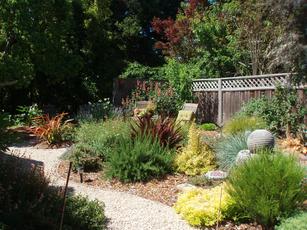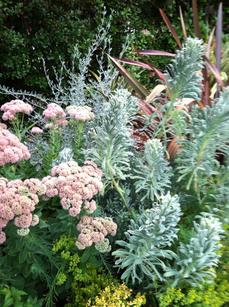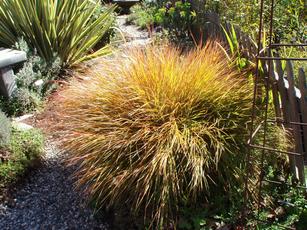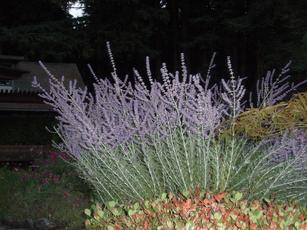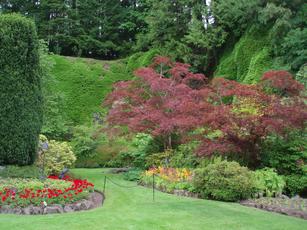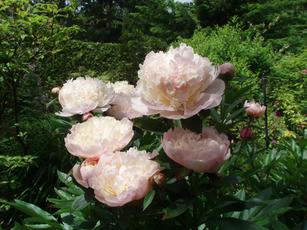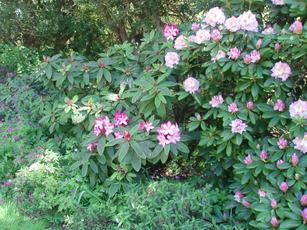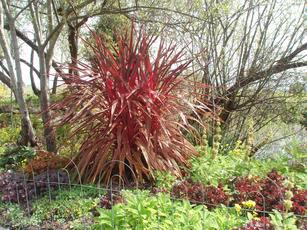Have you noticed how many plants are named after food? At this time of year when we are thankful for friends and family and this wonderful place we call home, I can't help but think about food, too. It's the most important thing we share year round. We eat to celebrate, we eat to comfort ourselves. Surround yourself with plants that remind you to give thanks whenever you look at them.
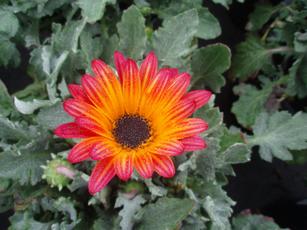 What makes you think of Thanksgiving dinner more than pumpkin pie? Many versions have been created to appeal to just about any palate. If you grow Pumpkin Pie African daisy you can bring these recipes to mind whenever you admire the blooms in your garden. Flowering over a long season starting in the spring their showy, vivid orange flowers attract birds and butterflies.
What makes you think of Thanksgiving dinner more than pumpkin pie? Many versions have been created to appeal to just about any palate. If you grow Pumpkin Pie African daisy you can bring these recipes to mind whenever you admire the blooms in your garden. Flowering over a long season starting in the spring their showy, vivid orange flowers attract birds and butterflies.
Maybe you're a gourmet cook and desserts after Thanksgiving dinner are extraordinary at your house. If you're not a fan of pumpkin perhaps a creme brulee would be more to your liking. This classic dessert first appeared in cookbooks in 1691. Creme Brulee heuchera with its peachy-bronze leaves, Creme Brulee coreopsis with custard yellow blooms or a fragrant Creme Brulee shrub rose growing in your garden would remind you year round of this delicious dessert.
Someone often brings deviled eggs as an appetizer before Thanksgiving dinner usually sprinkled with a dusting of paprika. If you have several Paprika achillea in your low water-use, deer resistant garden you can think of these goodies every time you see them.
Who doesn't like chocolate any time of year? Dark chocolate, milk chocolate, hot chocolate, white chocolate, they're all good. Plant Chocolate Chip ajuga groundcover with its beautiful lacy blue flower spikes in spring in sun or partial shade. It really stands out. And who could resist a rose called Hot Cocoa? This award-winning floribunda rose with ruffled, very fragrant chocolate-cherry colored blooms was first introduced in 2003 and has remained popular ever since.
If you don't have a chocolate cosmos to enjoy on a summer day in the garden you're missing a rare experience. Very deep burgundy flowers really do have the scent of chocolate. They make a good cut flower, look great with green and white in a bouquet and the fragrance is good enough to eat.
There are many plants that remind us of Thanksgiving with family or a get together any time of year and they all soun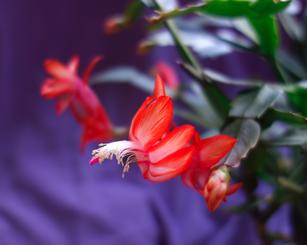 d so delicious. Raspberry Sundae or Bowl of Cream peonies sound yummy as do Mango coneflower, Strawberry Candy daylily, Plum Pudding coral bell, Cranberry Ice dianthus, Lemon Swirl lantana, Watermelon Red crape myrtle, Tangerine Beauty bignonia or Wild Cherry azalea. How about Bowl of Cherries campanula, Carolina Allspice, Strawberry Lemonade mandevilla or Raspberry Tart coneflower? I could go on and on.
d so delicious. Raspberry Sundae or Bowl of Cream peonies sound yummy as do Mango coneflower, Strawberry Candy daylily, Plum Pudding coral bell, Cranberry Ice dianthus, Lemon Swirl lantana, Watermelon Red crape myrtle, Tangerine Beauty bignonia or Wild Cherry azalea. How about Bowl of Cherries campanula, Carolina Allspice, Strawberry Lemonade mandevilla or Raspberry Tart coneflower? I could go on and on.
My blooming Thanksgiving cactus says it all. Almost overnight it has burst into bloom reminding me of all the many things I am thankful for. Take the time to tell those around you how much you appreciate them and count your blessings every day.

